Rosa Parks had endured prejudice, bigotry, and injustice all her life. She knew this was unfair and unjust. What made it worse was that there were laws that supported the unjust treatment of black people. The police and government did not treat everyone equally. They did not protect everyone equally. When Rosa Parks refused to give up her seat on the bus in Montgomery, Alabama, she inspired millions of people to speak out for civil rights. She is known as the Mother of the Civil Rights Movement.
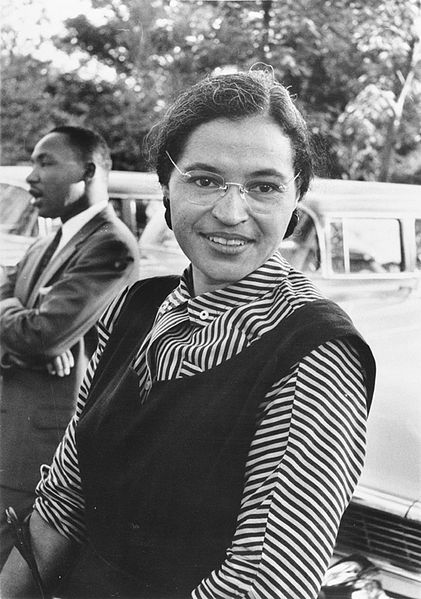
When Rosa Parks told the bus driver that she would not give her seat to a white passenger in 1955, she lit the spark that became the Civil Rights Movements. That one momentous action defined her life, and it didn’t come out of nowhere. Her involvement in civil rights had a long history and it went back generations.
When Rosa’s grandparents were born, there was still slavery in 15 states in the southern U.S. Her grandfather was born a slave on a plantation in Alabama. As a boy, he picked cotton all day in the hot sun, and he was often badly beaten by white overseers. As a slave, her grandfather had no one he could complain to or call for help. But after the Civil War and the issuing of the Emancipation Proclamation, slavery was abolished. Her grandfather and everyone who had been forced to live as a slave was free. The U.S. Congress passed amendments to the Constitution—giving blacks full citizenship rights and the right to vote.
After slavery was ended, it looked like things would get better. But after a few years, southern states and towns began passing “Jim Crow” laws that were designed to limit black people’s rights. Black people faced bigotry, racism, and prejudice.
Some forms of bigotry were scary and violent. The Ku Klux Klan was a terrorist organization that would threaten, intimidate, and sometimes attack and kill black people. Members of the Klan wore white hoods that hid their faces and spewed hatred of blacks, Jews, Catholics, and immigrants. They didn’t want blacks to be allowed to vote, have good jobs, or be treated with respect. When Rosa Parks was six years old in 1919 and living in Pine Level, Alabama, the Klan paraded by her house in the middle of the night. For days, her grandfather sat up all night with a double barreled shotgun to protect the family if necessary. Those nights, Rosa and her brother were told to sleep with their clothes on, so they could run away if they had to. But Rosa didn’t want to run. Even at six years old, she believed she was ready to fight.
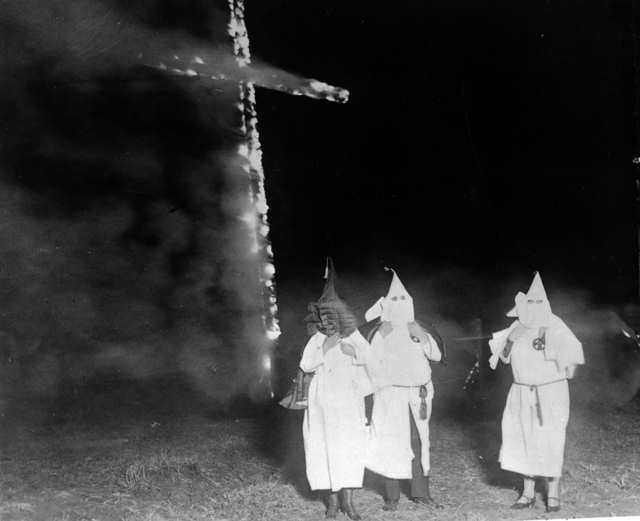
Under Jim Crow, many unjust laws were passed that limited the rights of black people. Segregation laws were passed in many southern states. It was illegal for blacks and whites to marry each other. They weren’t allowed to eat in the same restaurants, drink out of the same water fountains, or use the same bathrooms. They had to sit in separate sections of movie theaters and streetcars. The facilities weren’t just separate. They were almost always unequal, with black people having to go into buildings through a back alley or use a bathroom that wasn’t kept clean.
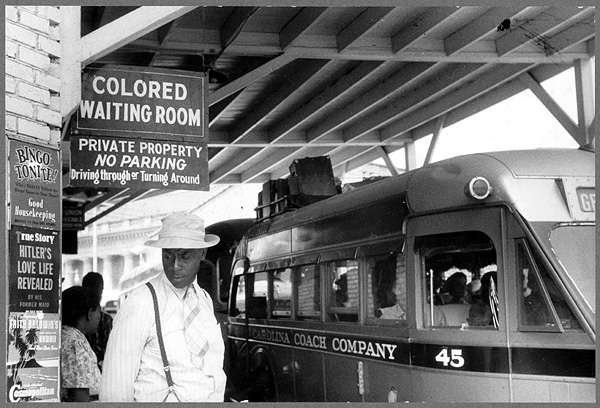
What did segregation mean for Rosa Parks when she was growing up? As part of segregation, blacks and whites had to go to different schools. A brand-new school for white kids was built near Rosa’s house in Pine Level, but she was not allowed to go there. The town paid for a bus that took the white kids to school, while the black kids had to walk. When the school bus drove by, the white kids threw trash out the window at Rosa and her friends.
Despite all of this bigotry, Rosa was not a bigot herself. She did not hate white people. As she grew up, she had some white friends and white teachers, and they would all treat each other like regular people. But these flashes of racial harmony did not change the segregation laws or the oppressive atmosphere.
Rosa Parks knew the segregation laws and bigotry toward blacks were unjust and unfair. When she grew up, she worked as a tailor and seamstress. In her free time, she was the secretary for the Montgomery, Alabama, chapter of the NAACP, the National Association for the Advancement of Colored People. The NAACP was founded to 1909, and at the time the word “colored” was a term commonly used for black people. Chapters of the NAACP all around the country worked to gain rights for black people and fight discrimination. In an interview with Ebony magazine, Rosa Parks said she and the NAACP worked “to challenge the powers that be, and to let it be known that we did not wish to continue being second-class citizens.”
As part of her work with the NAACP, Rosa Parks went for training at the Highlander School in Tennessee. The Highlander School was a place where people believed in integration, not segregation. Blacks and whites could get together and talk about issues. There were workshops on teaching people to become community leaders. “It was one of the few times in my life up to that point when I did not feel any hostility from white people,” Parks said later. “I experienced people of different races and backgrounds meeting together … and living together in peace and harmony. I felt that I could express myself honestly without any repercussions or antagonistic attitudes from other people.”
It was about six months after her experience at the Highlander School that Rosa Parks decided that she had had enough of segregation on public transportation in Montgomery.

Rosa Parks wasn’t planning to change the course of history when she got on the bus on December 1, 1955. But she did know the driver. He was unpleasant and mean. Several years before, he had thrown her off the bus because she refused to enter from the backdoor. Why shouldn’t she enter in the front like white people did? If she had noticed who was driving before paying the fare, she would not have gotten on.
The law said that white and black riders on the bus had to sit in separate sections. The whites sat in the front, and the blacks in the back. They weren’t even allowed to share the same row. Bus drivers often pushed black riders around. If the white section was full and any white people were standing, the driver made the first row of black riders stand and move to the back of the bus. They had to give up their seats for the white riders.
When Rosa Parks got on the bus, she sat down in the very front of the black section. The white section was full. When a few new white passengers got on, the bus driver ordered everyone in Rosa Park’s row to get up. The other passengers in her row reluctantly stood. But Rosa Parks didn’t move. She felt a powerful sense of determination. When the bus driver asked her why she wasn’t getting up, Rosa said she didn’t think she should have to. He threatened to call the police. Rosa Parks said, “You may do that.”
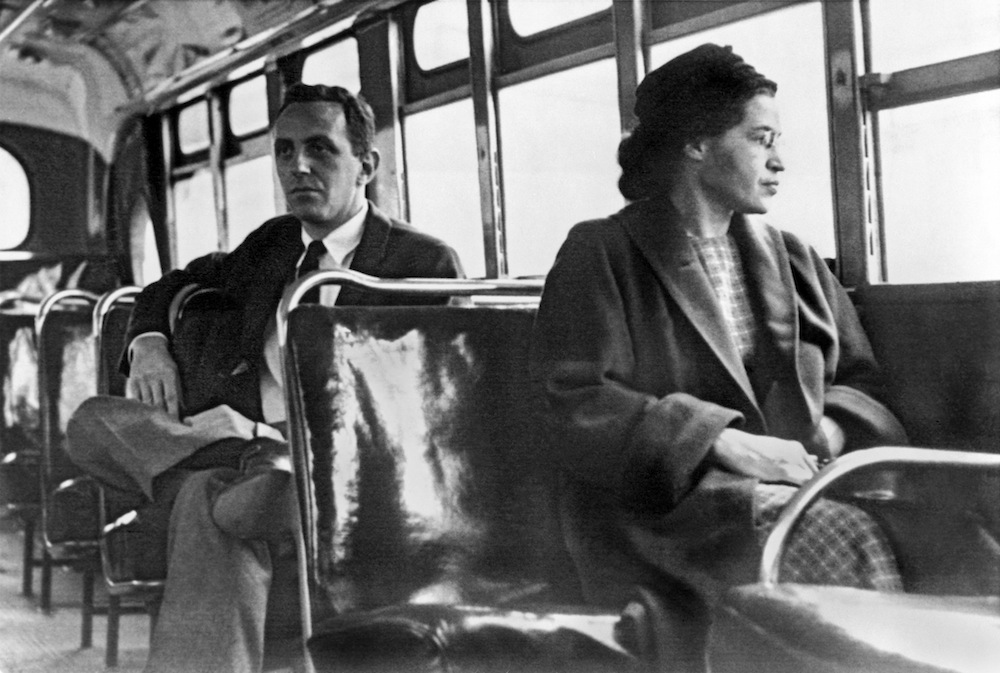
As Rosa Parks waited for the police, she thought about what might happen. Sometimes the police treated blacks harshly. Was she scared? A little. But she kept sitting. She told a radio reporter, “I don’t know why I wasn’t, but I didn’t feel afraid. I had decided that I would have to know once and for all what rights I had as a human being and a citizen, even in Montgomery, Alabama.”
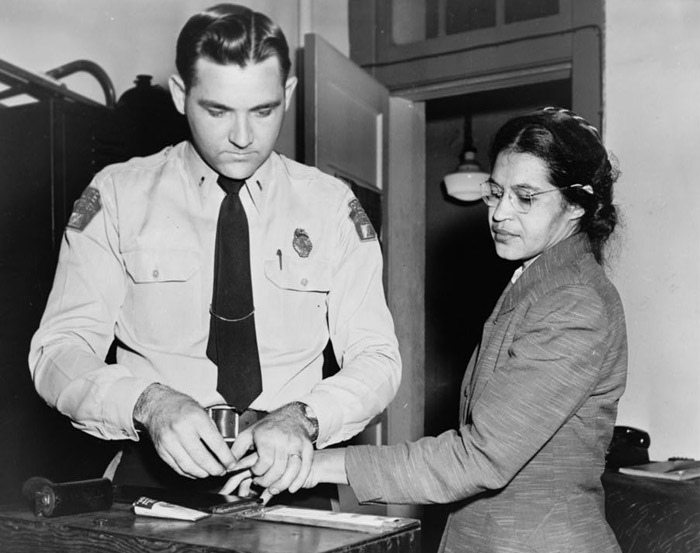
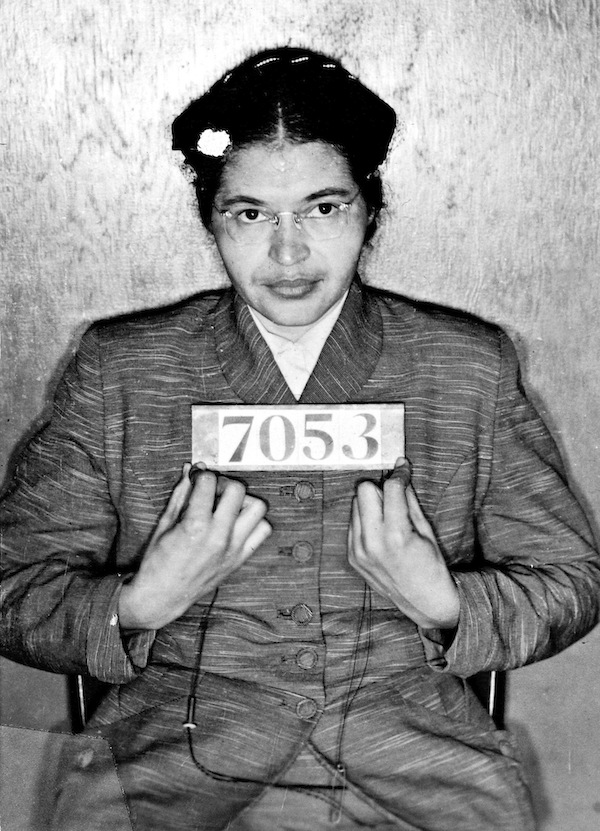
The police came and arrested Rosa Parks. Despite the indignity of the arrest itself, she was treated respectfully by the officers. When Rosa Parks was released on bail the same night, the local NAACP quickly went into action. They started calling everyone they knew and printed up flyers. They wanted to organize a major protest against segregation. The plan was to boycott the Montgomery city bus system and demand equal treatment under the law. This was a big deal, because 50,000 black residents of Montgomery rode the bus to get to work every day. Would they be willing to take a stand? Would they be willing to face what could be violent reaction? If the response to the boycott was harsh, how would they deal with it?
A meeting was held at the church of a young preacher named Martin Luther King, Jr. When Rosa Parks was introduced to the crowd, everyone stood up and cheered. Although Martin Luther King, Jr., had lived in Montgomery for only a short time, he was elected the leader of the boycott.
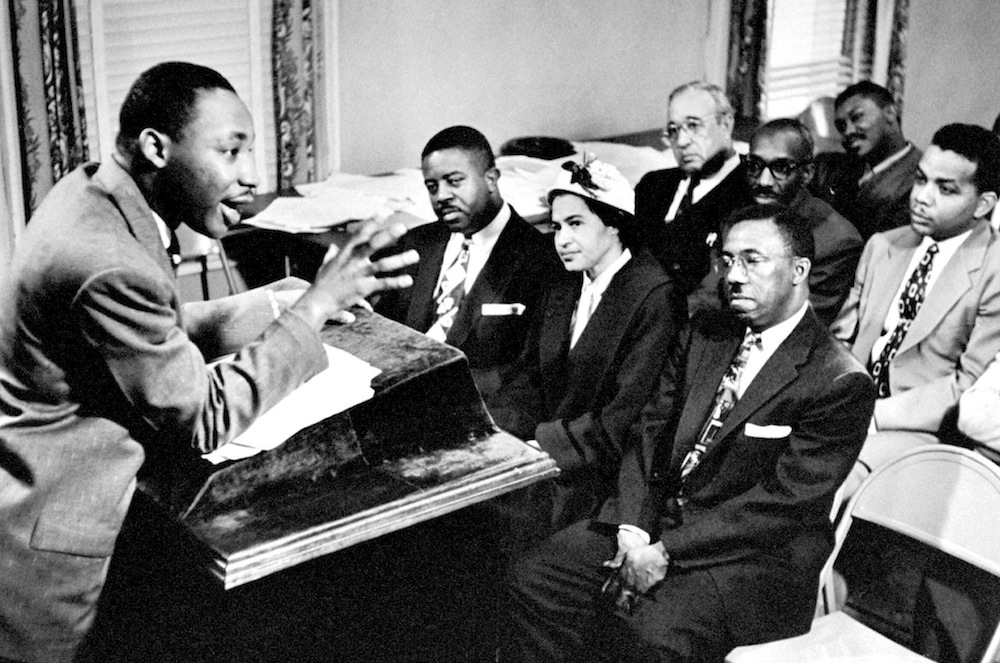
Rosa Parks said, “Being the minority, we felt that nothing could be gained by violence or threats or belligerent attitude. We believed that more could be accomplished through the nonviolent passive resistance, and people just began to decide that they wouldn’t ride the bus on the day of my trial, which was on Monday, December 5.”
Instead of riding the bus, Montgomery’s black citizens walked to work and organized car pools. Blacks were three-quarters of the riders, and when they stopped using the buses, the bus system lost a lot of money. The white politicians in Montgomery tried to disrupt the boycott. Martin Luther King’s home was bombed. Rosa Parks and her husband lost their jobs and received death threats. Rosa Parks, King, and 90 other people were arrested for “conspiring” to boycott a business in violation of an obscure Alabama law. But the boycott kept going and actually gained momentum. After Martin Luther King, Jr., was arrested he said, “This will not mar or diminish in any way my interest in the protest. We will continue to protest in the same spirit of nonviolence and passive resistance, using the weapon of love.”
The Montgomery bus boycott lasted for 381 days.
Although the resistance to the boycott was strong, Rosa Parks never got discouraged. The fact that all the blacks in Montgomery were standing together for civil rights—and that the national media was finally paying attention to the injustice of segregation made her feel light-hearted.
While the boycott was going on, lawyers for the NAACP started a court case, arguing that the segregation on buses violated the 14th Amendment of the Constitution. The lawsuit went all the way to the U.S. Supreme Court. In November 1956, the Supreme Court declared segregation on public buses illegal. The boycott went on until December 20, 1956 when the court’s ruling was enforced. On December 21, 1956, Rosa Parks boarded an integrated bus for the first time.
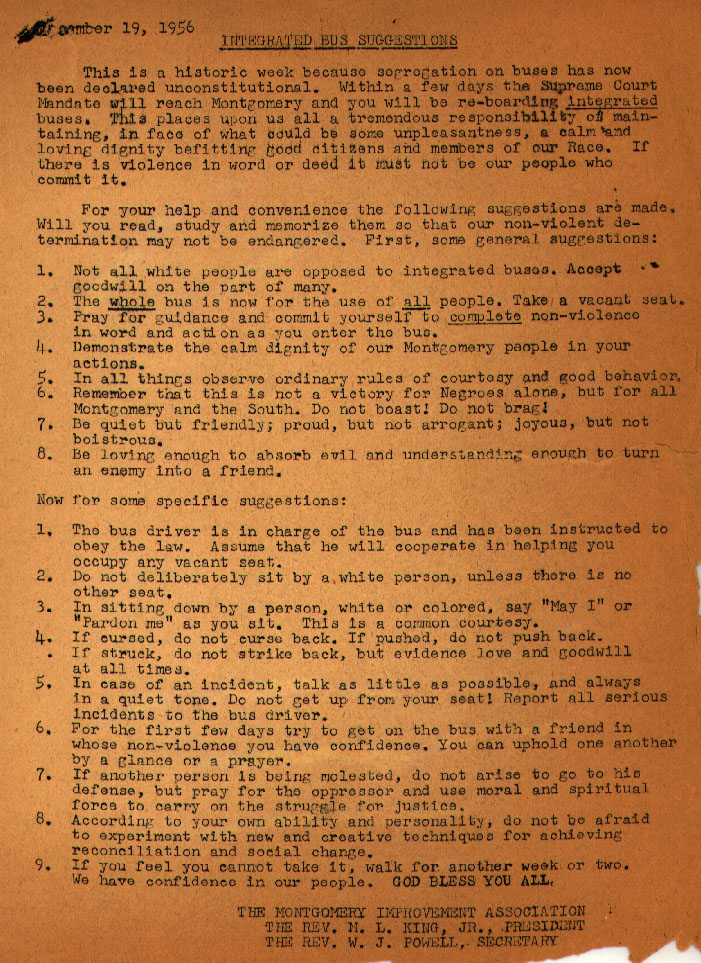
Rosa Parks worked for equality and fought against racial discrimination for the rest of her life. When she retired, she wrote an autobiography in 1992 called My Story, and she talked about the struggles and progress made since the Montgomery Bus Boycott. She also wrote that she was sad that there was still racism and racial violence. “We still have a long way to go,” she wrote.
Rosa Parks passed away at the age of 92 in 2005.
Written by Margaret Middlebach
[wp-simple-survey-41]



